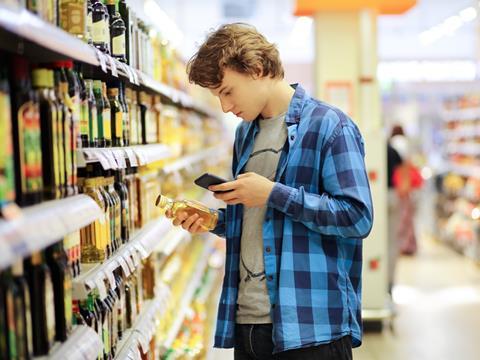
Across more than 30 years in the packaging industry working for companies like Nestlé, Mondi and Pepsico, Dr. Thomas Gröner, Director & Founder of TG PACK SOLUTIONS, has seen the topic of packaging sustainability from every perspective. In this interview, he shares his views on sustainability, talks about the problem of food waste, and argues that some political guidelines are questionable.
Thomas, you have extensive knowledge and experience in the area of sustainable packaging. Today you work as an independent consultant. How has that changed the way you contribute to modern and sustainable packaging?
For the past four years, I have been successfully running my own business TG PACK SOLUTIONS. I advise companies and start-ups along the packaging value chain in the areas of sustainability, innovation and business development. This includes, for example, packaging manufacturers and packed consumer goods companies in Europe and North America.
My approach can be summarized in three words: holistic, open and fact-based.
Holistic: because I advise from the perspective of material manufacturers, packaging producers and the FMCG industry as well as from the perspective of waste management companies and consumers. Open: because I am completely free in my choice of materials, partners and suppliers. Fact-based: as a third party from outside I create my concepts independently and based on facts for the benefit of the customer.
Sustainability is a key subject for the packaging industry. Where do you see the challenges currently?
Sustainability is a very complex topic. If I optimise one parameter, I may well achieve improvements in one area, but this may be detrimental elsewhere. So not everything is as black and white as it is often portrayed.
The other challenge is that sustainability means an added value but this often comes with additional costs. We need an increased understanding that sustainability requires commitment in companies and might also require investment or higher input costs. To navigate in these complex economic circumstances, finding the optimum solution for society and the company is the biggest challenge.
How do you see the role of society and politics when it comes to realizing sustainability in packaging?
Basically, we have to assume that most consumers give little thought to packaging. This concerns the functionality of the packaging on the one hand and the end of life on the other. Let’s have a look at multi-component packaging e.g. a yogurt pot: if you have to pull off a strap to remove the paper sleeve on a yogurt pot then I assume that more than 80 % of consumers simply don’t do that. That’s why it’s up to us to design solutions that consumers can easily handle. The packaging should of course be clearly labelled in terms of how it should be disposed of.
There is also the question of whether consumers are prepared to bear the additional costs for sustainable packaging. When they see the price on the shelf the decision is often not made in favour of the sustainable solution. There are data points that reveal a strong difference between what people say and what is actually done in relation to the willingness to pay more.
As far as politics is concerned, I would like to see more focus on facts. This is often missed out.
Do you have an example of the lack of focus on facts in politics?
Let’s zoom into single-use plastics, plastic straws have been banned at some point. But if you check what single-use plastic you find most in the environment e.g. on beaches: it’s cigarette butts, many times more than straws. This misconception has consequences not only here in Europe but also elsewhere if the concept is copied. This is currently happening with straws, which are now banned in India too.
With your consulting work, you aim to help companies develop sustainable packaging strategies and solutions. How do you see the role of Design for Recycling?
If we keep materials in a circular economy we have a big leaver to more sustainable packaging. This applies to all materials, from paper to cardboard, plastic, metal and glass. In almost all cases a closed loop is more resource-efficient and reduces the CO2 footprint. Design for recycling is the main driver for the circular economy. The other drivers are sorting, recycling and use of recycled content.
Unfortunately, there are limits on the recycling of flexible packaging in the sorting industry in some European countries: if a confectionary bag made of mono-material is not even sorted into a PE-flex or PP-flex material stream because it is supposedly too small then the benefits of Design for Recycling reach their limits. But it’s possible, in the modern Swedish sorting plant for example flexible packaging down to 50 x 50 mm is sorted into the LDPE and PP flexible fractions. In Germany, this usually only applies to packaging larger than A5 or A4.
What is your view on recycled content quotas to increase sustainability in the packaging industry?
TG: In general minimum recycled content requirements are a positive approach.
However for plastic food packaging that is not made of PET, product-related use quotas make little sense. In the current version of the Packaging and Packaging Waste Regulation (PPWR) much thought is being given to re-evaluating these minimum recycled content requirements in 2027. In principle, only chemical recycling can be used as a process for food contact packaging according to currently by the European Food Safety Authority (EFSA) permitted recycling processes - unless it is made of PET.
As well the EU is not yet clear if chemical recycling is counted for the minimum recycled content requirements. On top we have conflicts of objectives as chemical recycling has a significantly higher CO2 footprint than mechanical recycling. For me it makes no sense to use materials that can go into mechanical recycling for chemical recycling as a solution for minimum recycled content in PE or PP food contact packaging.
Last but not least minimum recycled content requirements should be put in place for all materials (paper, cardboard, plastic, metal, glass) and not for plastic only as per PPWR.
You have worked for companies like Nestlé and big food companies are your customers now. What are the particular challenges of food packaging?
For food packaging product protection is much more important compared to other packaging. Food often has a very high carbon footprint especially animal-based foods. The food normally has a much higher share of carbon emissions than the packaging. On average only three percent comes from the packaging and 97 % from the product itself. In the case of packaged beef, the packaging only accounts for 0.5 % of the carbon footprint. If such products are not protected in the best way food ends up as waste and these values increase again.
We know that one-third of all food worldwide is not eaten - and in western, industrialized countries most of this food waste takes place in the homes. Example Germany: according to the Federal Ministry of Food and Agriculture 59 % of food waste occurs in households. It is therefore important to ensure that our food is properly protected and can be consumed entirely. Optimise packaging and pack sizes play an important role here.
Sustainable packaging is a very complex topic. What role do the media and educational formats have to play to compensate for a potential lack of knowledge in society?
Both could play an important role. A challenge is certainly that journalistic formats that blame/finger-point achieve better coverage than explanatory formats. In addition, the attention span of the target audience is sometimes relatively short. This makes it difficult to create the right formats. Appropriate education in schools is very helpful too.
As a consultant, you work very closely with innovation topics. Which developments in sustainable packaging are currently impressing you the most?
I would like to highlight the development of real mono-material solutions to enable the circular economy and reduce CO2 footprints.
There are also many other clever approaches that are likely to have a clear positive effect on sustainability. But looking at the past many solutions that have proven to be less viable.
In general, I would like to see that the companies involved clearly communicate sustainability-related information of their products such as CO2 emissions or recyclability.
What role can external consultants play in the industry?
First of all, the advantage for the companies is the independent outside-in view. In addition, there is the flexible provision of resources that are sometimes not available within a company, especially in view of the current shortage of skilled personnel.
The advantage of external consulting is that you find normally open ears in the various departments of a company and the feedback from various functions helps the management to come to the right decisions. However, good advice always means that it is tailormade for the individual company.
If you liked this story, you might also enjoy:
Reuse vs. single use – which is better for the environment?
Sustainable Innovation Report 2025: Current trends and future priorities
What can the world learn from South Korea’s world-leading performance in plastics circularity?

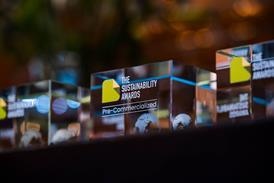
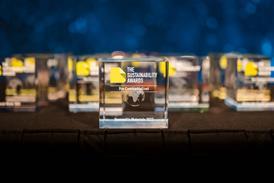
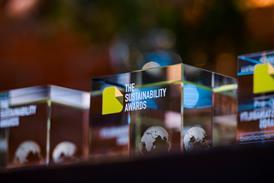
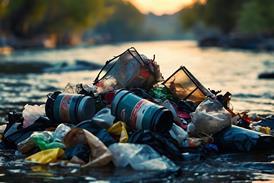
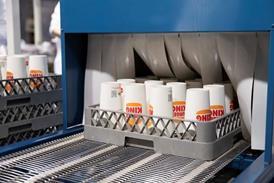












No comments yet